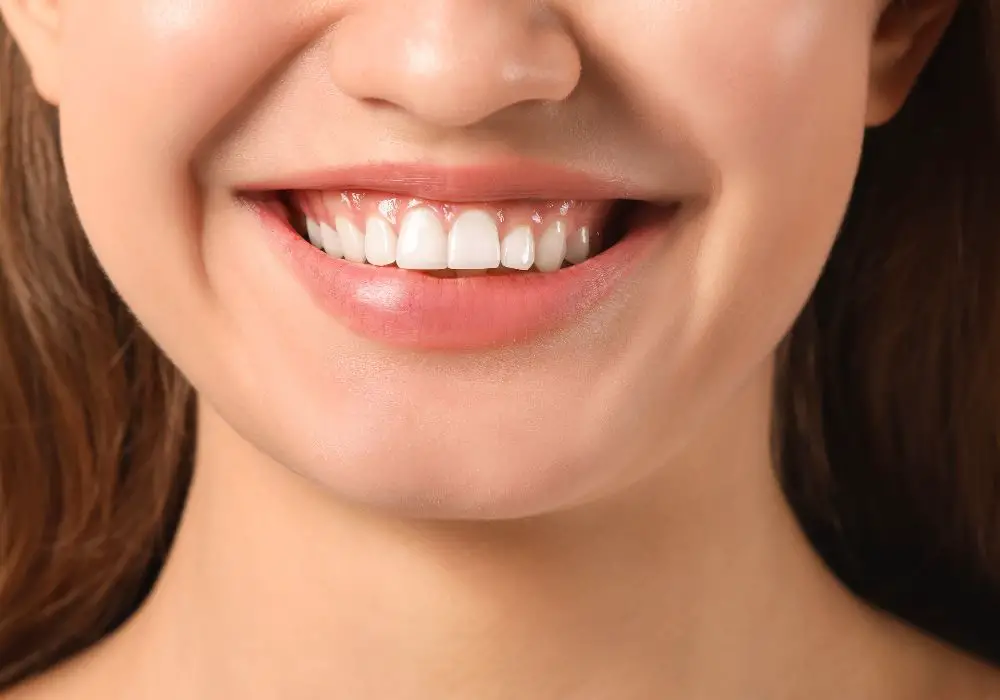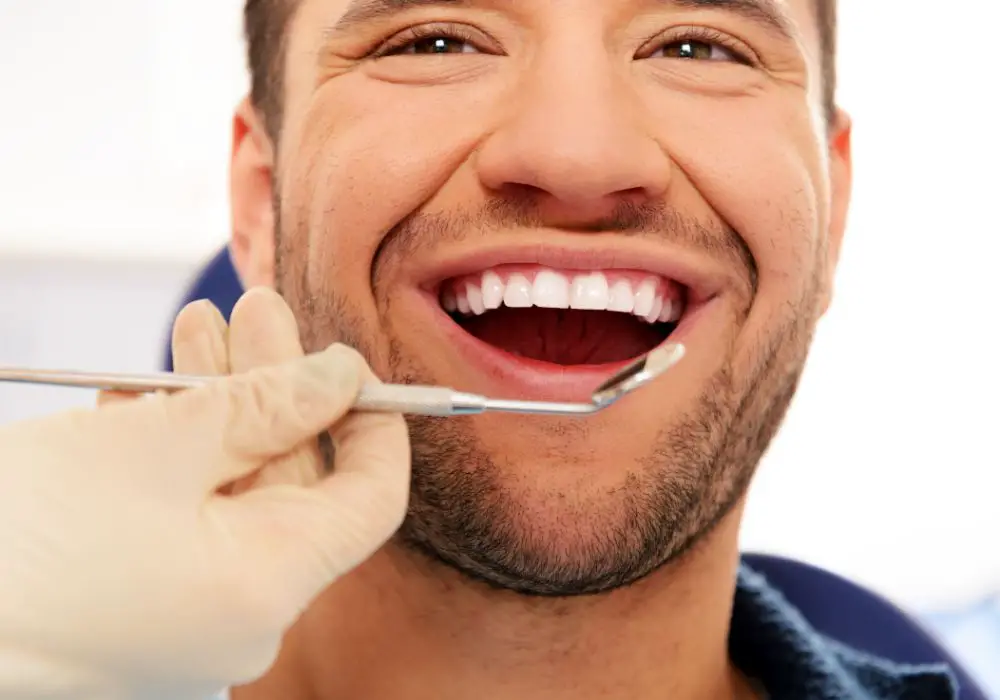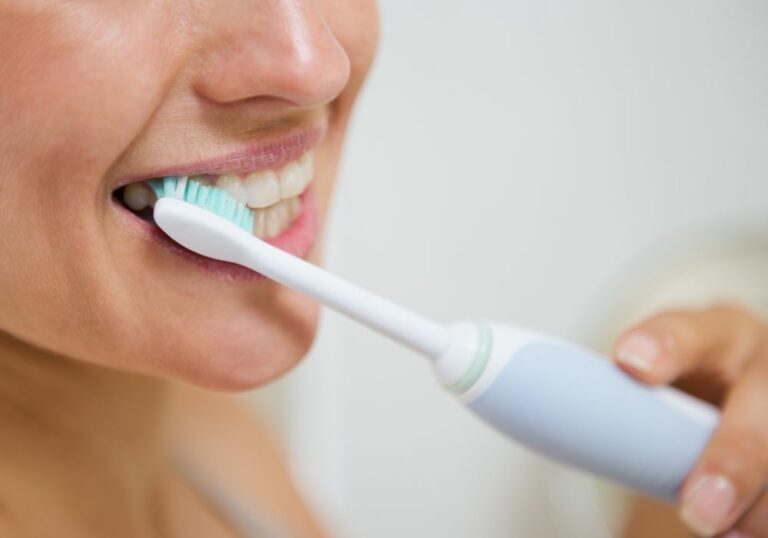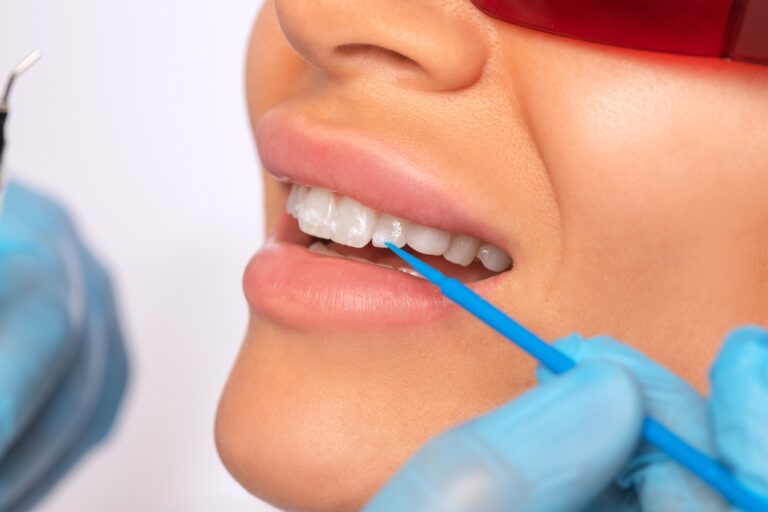Are you experiencing gum recession? If so, you may be wondering if your gums can heal from this condition. Gum recession occurs when the gum tissue that surrounds your teeth pulls back, exposing the root of your tooth. This can lead to tooth sensitivity, decay, and even tooth loss if left untreated.
While it’s not possible for your gums to grow back on their own, there are steps you can take to prevent further recession and even restore some of the lost gum tissue. Proper oral hygiene, including brushing and flossing regularly, can help remove plaque and prevent further damage. Additionally, using a soft-bristled toothbrush and avoiding aggressive brushing can help prevent further recession.
In some cases, your dentist may recommend a gum graft procedure to restore lost gum tissue. During this procedure, a small piece of tissue is taken from another area of your mouth and attached to the area where the gum has receded. This can help cover the exposed root and prevent further damage. However, it’s important to note that not all cases of gum recession require surgery and that prevention is key in maintaining healthy gums.
Understanding Gum Recession

If you have noticed that your teeth appear longer than usual or you have been experiencing sensitivity or pain, you may be experiencing gum recession. Gum recession is a common dental problem that affects many people. In this section, we will discuss the causes and symptoms of gum recession.
Causes of Gum Recession
Gum recession can be caused by a variety of factors, including:
- Poor oral hygiene: If you do not brush and floss regularly, plaque can build up on your teeth and gums, leading to gum disease and gum recession.
- Genetics: Some people may be more prone to gum recession due to their genetics.
- Aggressive brushing: Brushing too hard or using a toothbrush with hard bristles can cause the gum tissue to wear away.
- Gum disease: Gum disease is a bacterial infection that can cause inflammation and damage to the gums, leading to gum recession.
- Hormonal changes: Hormonal changes during puberty, pregnancy, and menopause can make the gums more sensitive and prone to recession.
- Smoking: Smoking can weaken the immune system and damage the gum tissue, leading to gum disease and gum recession.
- Teeth grinding: Grinding your teeth can put pressure on the gums and cause them to recede over time.
Symptoms of Gum Recession
Some common symptoms of gum recession include:
- Teeth that appear longer than usual
- Exposed tooth roots
- Sensitive teeth
- Pain or discomfort when eating or drinking hot or cold foods and beverages
- Visible notches or grooves on the teeth at the gumline
If you are experiencing any of these symptoms, it is important to see a dentist for an evaluation. Early diagnosis and treatment can help prevent further damage and protect your oral health.
Can Gums Heal Naturally?
Gum recession is a common dental problem that occurs when the gum tissue that surrounds the teeth pulls back, exposing more of the tooth or the tooth’s root. If left untreated, gum recession can lead to tooth decay, tooth loss, and other dental problems.
While there is no way to make gums grow back naturally, there are some things you can do to help your gums heal and prevent further damage. Here are some tips:
Practice Good Oral Hygiene
Brushing and flossing your teeth regularly is the best way to prevent gum recession and other dental problems. Make sure you brush your teeth twice a day and floss at least once a day. Use a soft-bristled toothbrush and fluoride toothpaste to clean your teeth and gums gently.
Use Natural Remedies
Some natural remedies may help improve your gum health and prevent gum recession. Here are a few to consider:
- Oil pulling: Swish coconut oil or sesame oil around in your mouth for 10-20 minutes each day to help remove bacteria and promote gum health.
- Aloe vera: Apply aloe vera gel to your gums to help reduce inflammation and promote healing.
- Green tea: Drink green tea regularly to help reduce inflammation and promote gum health.
Quit Smoking
Smoking is a major risk factor for gum recession and other dental problems. If you smoke, quitting can help improve your gum health and prevent further damage.
Visit Your Dentist Regularly
Regular dental checkups and cleanings can help prevent gum recession and other dental problems. Your dentist can detect early signs of gum recession and provide treatment before it becomes more severe.
In summary, while gums cannot grow back naturally, practicing good oral hygiene, using natural remedies, quitting smoking, and visiting your dentist regularly can help improve your gum health and prevent further damage.
Preventing Gum Recession

If you want to prevent gum recession, there are two things you should focus on: good oral hygiene practices and regular dental check-ups.
Good Oral Hygiene Practices
One of the most important things you can do to prevent gum recession is to practice good oral hygiene. This means brushing your teeth twice a day for two minutes each time, flossing at least once a day, and using mouthwash to kill bacteria that can cause gum disease.
When brushing your teeth, use a soft-bristled toothbrush and brush gently in circular motions. Brushing too hard or using a hard-bristled brush can damage your gums and cause them to recede.
Flossing is also important for preventing gum recession. It helps remove food particles and plaque from between your teeth and along your gumline. If you have trouble flossing, try using a water flosser or interdental brushes instead.
Regular Dental Check-Ups
Regular dental check-ups are also important for preventing gum recession. Your dentist can detect early signs of gum disease and recommend treatments to prevent it from progressing.
During a dental check-up, your dentist will examine your teeth and gums, take x-rays if necessary, and clean your teeth to remove plaque and tartar buildup. They may also recommend treatments like scaling and root planing or gum graft surgery if you have advanced gum disease.
In addition to regular dental check-ups, you should also see your dentist if you notice any signs of gum recession, such as tooth sensitivity, gum swelling or bleeding, or a receding gumline. Early treatment can help prevent further damage to your gums and teeth.
By practicing good oral hygiene and seeing your dentist regularly, you can help prevent gum recession and keep your gums and teeth healthy for years to come.
Treatment Options for Gum Recession
If you have noticed that your gums are receding, it is essential to seek treatment to prevent further damage and improve your oral health. Treatment options for gum recession can be divided into two categories: non-surgical and surgical treatments.
Non-Surgical Treatments
Non-surgical treatments are usually the first line of defense against gum recession. They are typically less invasive than surgical treatments and can be done in a dental office. Here are some of the non-surgical treatments for gum recession:
- Scaling and root planing: This is a deep cleaning procedure that removes plaque and tartar from the teeth and root surfaces. It also smooths out rough spots on the roots, making it easier for the gums to reattach to the teeth.
- Antibiotics: Antibiotics can be prescribed to treat any underlying bacterial infection that may be contributing to gum recession.
- Desensitizing agents: These are applied to the exposed tooth roots to reduce sensitivity and discomfort.
- Fluoride treatments: Fluoride can help strengthen the tooth enamel and reduce the risk of further gum recession.
Surgical Treatments
If non-surgical treatments are not effective, your dentist may recommend surgical treatments. These treatments involve cutting and reshaping the gums and/or bone to cover the exposed tooth roots. Here are some of the surgical treatments for gum recession:
- Gum grafting: This involves taking tissue from another part of the mouth (such as the roof of the mouth) and attaching it to the affected area to cover the exposed tooth roots.
- Pocket depth reduction: This involves folding back the gum tissue and removing any bacteria or tartar from the root surfaces. The gum tissue is then secured in place to reduce the pocket depth between the teeth and gums.
- Regeneration: This involves placing a regenerative material (such as a membrane or graft) in the affected area to stimulate the growth of new gum tissue and bone.
It is essential to discuss your treatment options with your dentist to determine which option is best for you. With proper treatment, it is possible for your gums to heal from gum recession and improve your overall oral health.
Living with Gum Recession

If you are living with gum recession, there are several things you can do to manage the condition and prevent further damage to your gums and teeth.
First, it is important to maintain good oral hygiene habits. Brush your teeth twice a day with a soft-bristled toothbrush and fluoride toothpaste. Floss daily to remove plaque and food particles from between your teeth and along the gumline. Consider using an antiseptic mouthwash to kill bacteria that can cause gum disease.
Avoid using tobacco products, as they can irritate your gums and increase your risk of gum disease. If you have a lip or tongue piercing, be aware that it can cause gum recession and other oral health problems.
If you grind your teeth or clench your jaw, talk to your dentist about getting a mouthguard to protect your teeth and gums.
You may also want to make some dietary changes to support your oral health. Eat a balanced diet that includes plenty of fruits and vegetables, lean protein, and whole grains. Avoid sugary and acidic foods and drinks, which can erode your tooth enamel and irritate your gums.
Finally, visit your dentist regularly for checkups and cleanings. Your dentist can monitor your gum recession and recommend treatments to prevent further damage. They may also recommend a gum graft to restore lost gum tissue and protect your teeth from further damage.
By following these tips, you can manage your gum recession and protect your oral health for years to come.
Frequently Asked Questions
Can receding gums heal naturally?
In some cases, mild gum recession can be treated and reversed naturally. Maintaining good oral hygiene habits, such as brushing twice a day and flossing daily, can help prevent further gum recession and promote healing. Eating a healthy diet and avoiding smoking can also improve gum health.
What are the stages of gum recession?
Gum recession can be mild, moderate, or severe. In the early stages, you may notice some sensitivity or minor changes in the appearance of your gums. As the recession progresses, more of the tooth root may become exposed, and you may experience increased sensitivity and even tooth loss in severe cases.
What causes gum recession?
Gum recession can be caused by a variety of factors, including poor oral hygiene, aggressive brushing, gum disease, hormonal changes, and genetics. Certain medications and medical conditions can also increase the risk of gum recession.
Is there a new treatment for receding gums?
There are several treatments available for receding gums, including gum grafting, scaling and root planing, and laser therapy. Research is ongoing to develop new and more effective treatments for gum recession.
How long does it take for gums to heal?
The healing time for gum recession depends on the severity of the recession and the treatment used. Mild cases may heal in a few weeks, while more severe cases may take several months to heal completely.
When is it too late for gum grafting?
Gum grafting can be an effective treatment for gum recession, but it is important to seek treatment early before the recession becomes too severe. In some cases, gum grafting may not be possible if there is not enough healthy gum tissue available to graft onto the affected area.







